Japan Report - Lions vs. Hawks at the Metlife (Seibu) Dome.
One of my “bucket-list” projects that brought be back to Japan was to see a professional baseball game in all the pro-level parks in both the MLB in North America and the NPB in Japan. On Saturday, April 8th, I took a step toward completing that goal when I went to the Seibu Dome, now called the MetLife Dome, in Saitama, Japan to watch the Seibu Lions play against the SoftBank Hawks.
The Game
This game featured two Pacific League rivals against each other. The Hawks are in third place in the league, two games behind first place Rakuten Eagles and half a game behind the Orix Buffaloes. The Lions are two games behind the Hawks.
The game itself was a pretty well played affair. It moved at a very brisk pace, eventually ending fifteen minutes short of three hours.
The difference in pitching was the key to this game. The Hawks pitching constantly fell behind, with counts of 2-1 or 3-2 not uncommon. This forced the Hawks pitchers to throw more hittable balls to keep from walking batters. The Lions were able to catch a good number of this pitches and put them into play, getting men on base and bringing them home.
The Lions pitching on the other hand kept the Hawks in check throughout the game. The only run allowed was a solo homer late in the game, this when the Lions already had built a 5-0 lead. The Lions got that run back with a homer of their own, finishing with a win at 6-1.
The Stadium
Seibu Dome, which is now called MetLife Dome, but I can’t get “Seibu Dome” out of my head, is a quirky place.
First off the Dome doesn’t complete enclose the stadium. A quick check on Wikipedia verifies my suspicion, that the stadium was retrofitted with a dome after it was constructed. The stadium was built in 1979. The dome was added in two phases in 1997 and 1998. The result is that while there won’t be any rain delays, natural wind flow can come through to affect balls hit into the air. AND, according to Wikipedia, it’s also possible to hit a home run out of the park, something not doable in a most domed stadiums.
There’s something of a minor league air to the surroundings. Before the dome, which is easy to get to having a train station right in front of it, is a little village of vendors selling food, caps, and other paraphernalia. You have to walk through this area, which is several avenues wide, to get to the ticket gate and entrance.
There’s something of a minor league air to the surroundings. Before the dome, which is easy to get to having a train station right in front of it, is a little village of vendors selling food, caps, and other paraphernalia. You have to walk through this area, which is several avenues wide, to get to the ticket gate and entrance.
This semi-permanent feel continues after you enter. The food and drink vendors “inside” the stadium are in portable stands not connected to the structure. The stadium proper is pretty much the playing field and the surrounding stands.
And there are no stairs to get to the upper levels. The stadium was built into a slope (artificial or man-made, I don’t know). You walk up what amounts to a giant ramp to get to your seats.
And beware, there is no passage or walkway (that I could find) connecting the two sides of the stadium. If you want to go to the other side, you have to walk down to the entrance gate, get your hand stamped, then walk to the entrance gate on the other side to have someone shine a black light on it to see it before you’ll be allowed back in. I found this out when I heard that one of my favorite Japanese restaurants, CoCo Ichiban Curry House, had a stall at the stadium. It was on the other side, forcing me to go through this little trek.
Another feature which harkens back to a smaller, simpler past is the bleacher section. Part of it has no seats. Just a broad, flat area, painted green, where people bring blankets to lay across the ground and watch. Think of the slope behind the outfield at the park where the Little League champions series is played in Williamsport, Pennsylvania.
I like the stadium. I would have a good time coming here to watch games as a fan.
The Atmosphere
Baseball games in Japan are fun. My most commonly used analogy is that they are more like American college football games, with cheerleaders, the crowd chanting and signing in unison, drums and horns playing all the time. This game had all of that.
Another difference between games in the U.S. and in Japan is a sense of inclusiveness. I’ve known for about about a decade now that stadiums in Japan will designate a section of the seats for visiting fans. In some games between teams close to each other geographically, or when one team has a huge national following, such as when the Yomiuri Giants play the DeNA Baystars in Yokohama, the visiting team’s section can as much as half the stadium. I have tickets in the visitors section to see the Baystars play the Hiroshima Carp at Mazada Stadium in Hiroshima next week. There are rules prohibiting the wearing of home team colors in the visitors section.
I’ve also seen caps, jerseys and souvenirs for visiting teams regularly sold at Japanese stadiums. I can’t imagine anyone selling a San Francisco Giants cap at the Ravine.
The game at MetLife/Seibu Dome took this one step farther.
The Japanese don’t have a “seventh inning stretch” as we do in North America. But there are different traditions at different parts for the seventh inning.
At this game, after the close of the 6th inning, the SoftBank Hawks fans starting chanting their team’s fight song. They also blew up yellow “jet-balloon,” big sperm-shaped balloons with plastic tips where you blow them up that whistle as you release them to send them shooting into the sky.
While they were singing, the big screen on the scoreboard flashed the SoftBank Hawks insignia and played the music for their fight song. As they ending the song, the Hawks fans released their balloons sending them whistling through the air with a cheer.
I was still pondering this, thinking again that you’d never see an MLB park facilitating visiting fan celebration, when the top of the 7th came around. Now it was the Lions’ home team fans doing the same, singing their fight song, blowing up jet-balloons, this time blue, as their team’s insignia gleamed from the scoreboard and their song blared from the speakers. On cue, they released their balloons and cheered after the song ended.
I am putting this down to a Japanese sensibility toward being kind to guests.

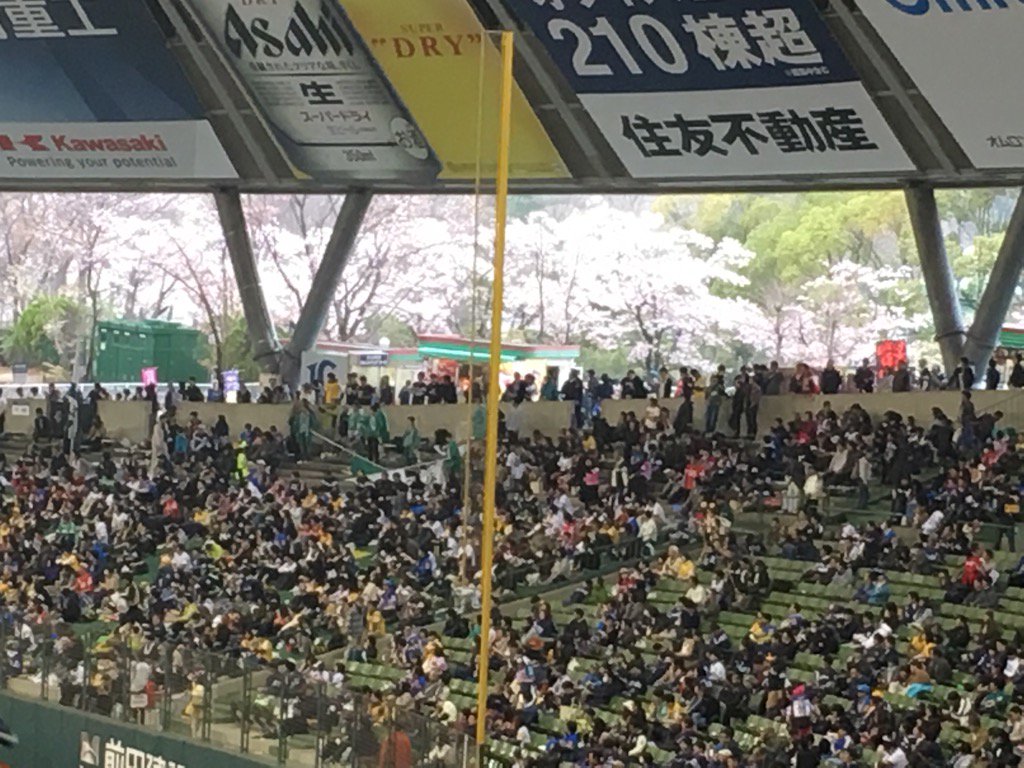
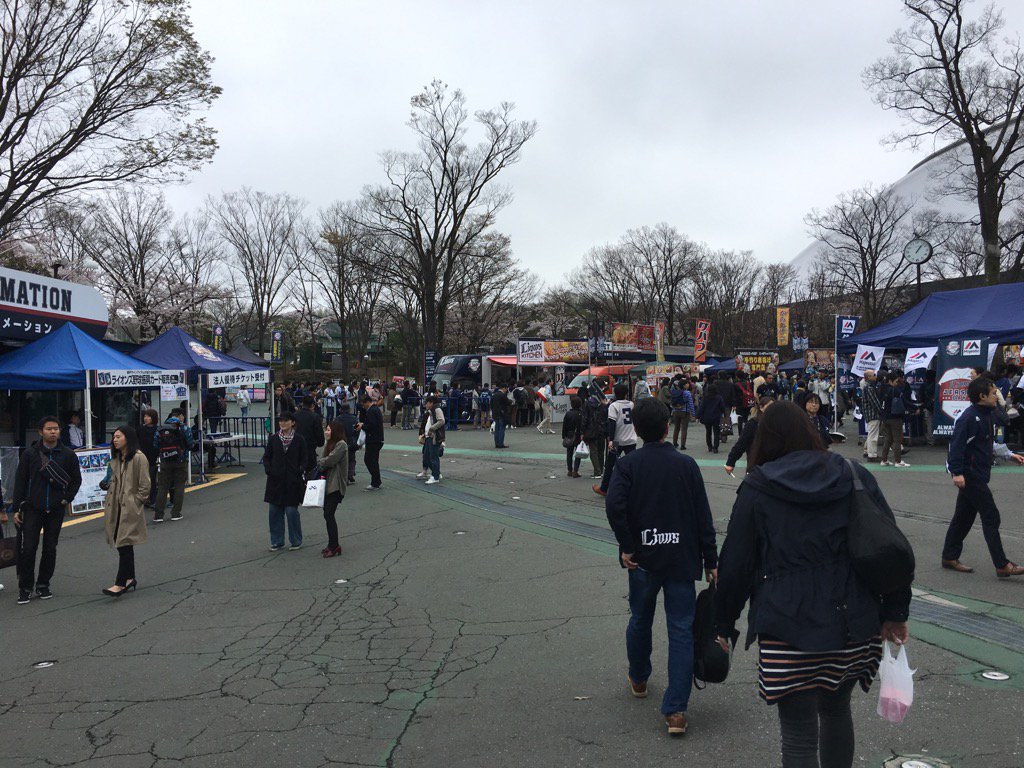

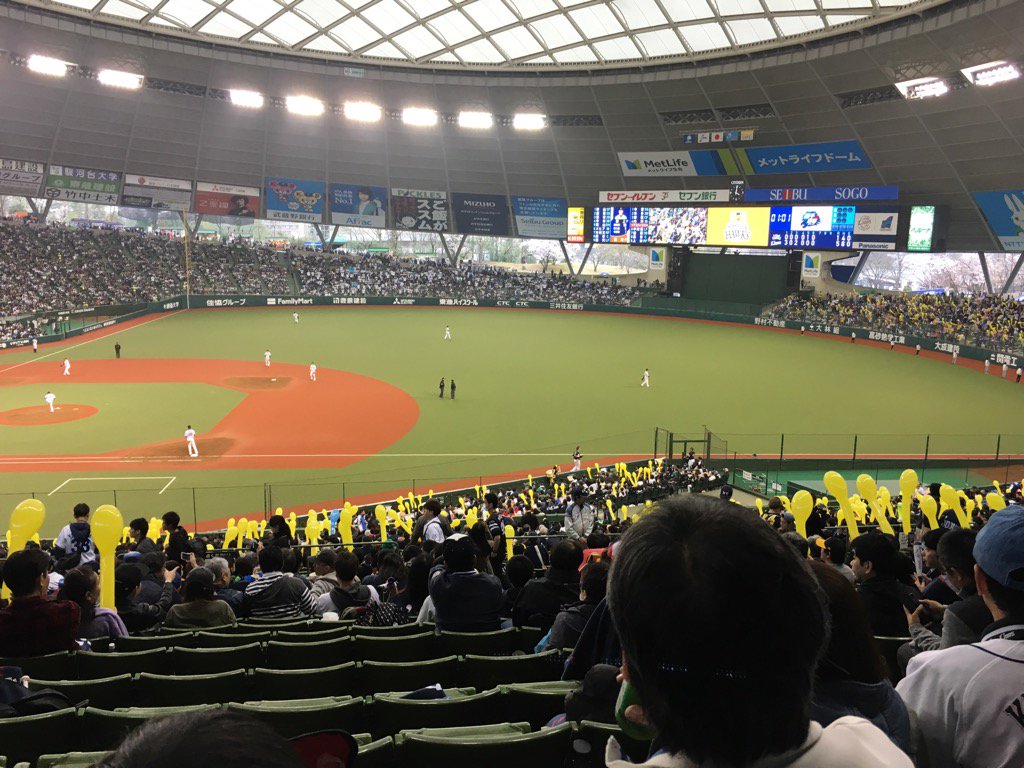
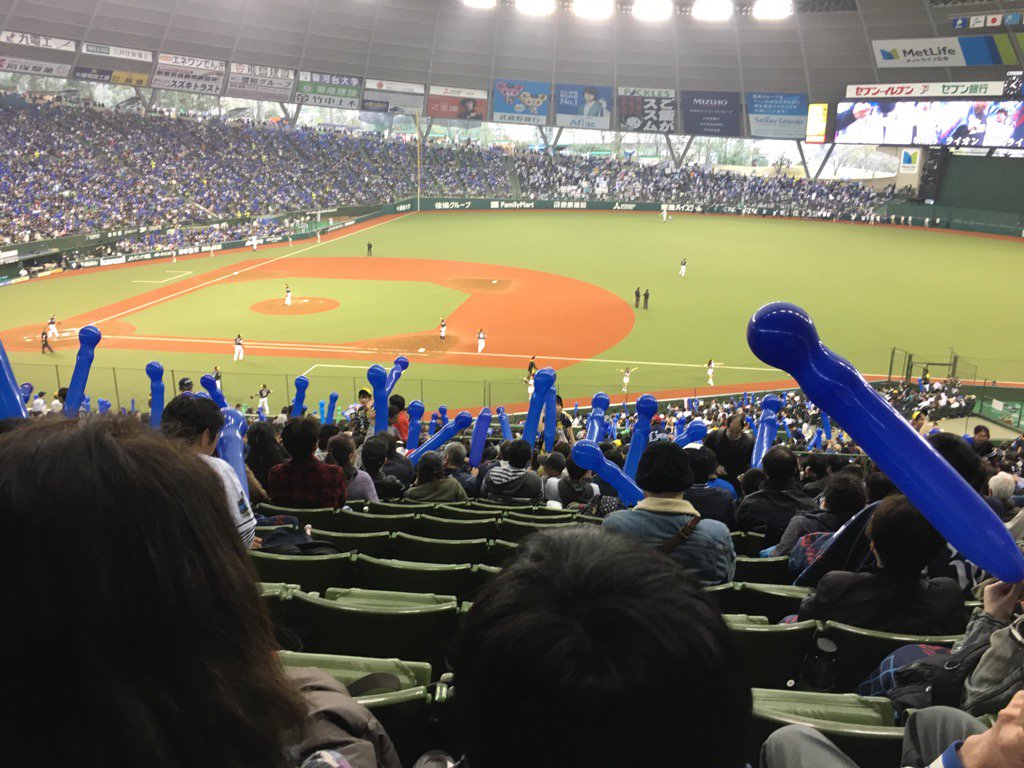
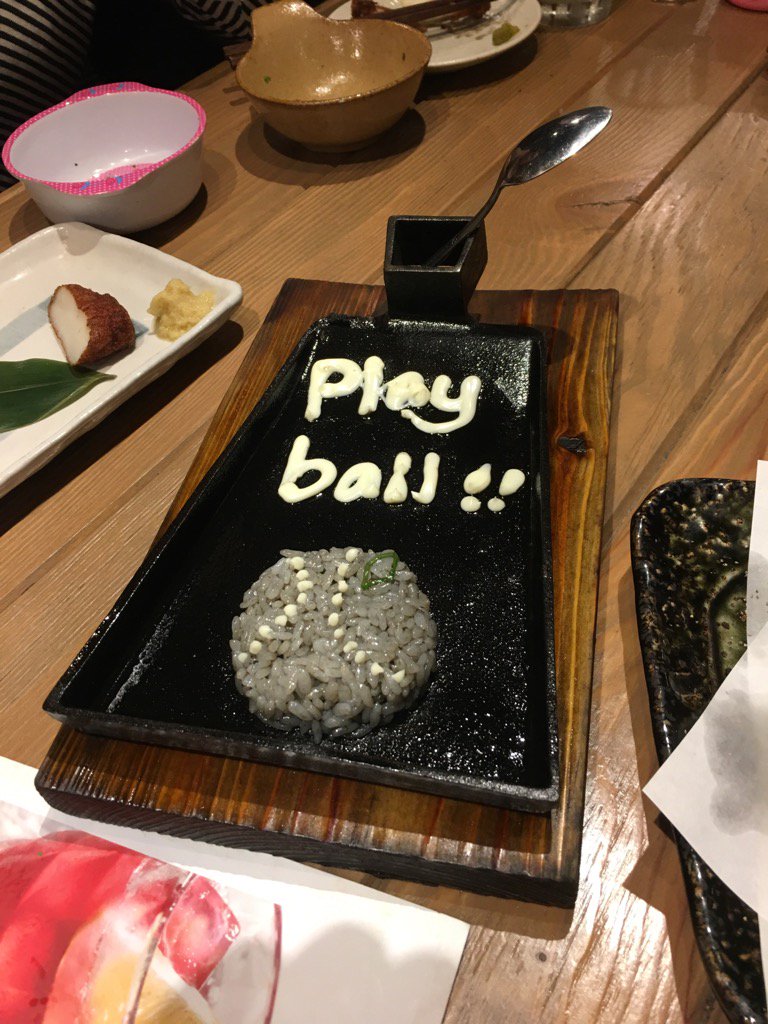


0 Comments:
Post a Comment
<< Home